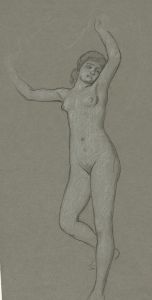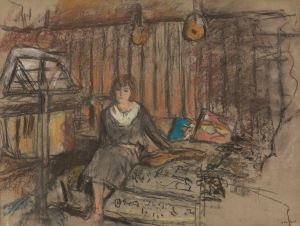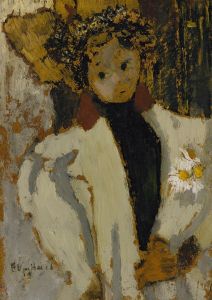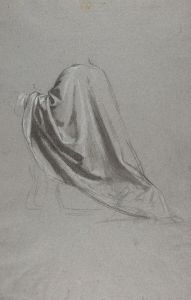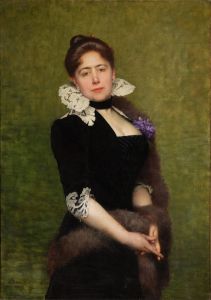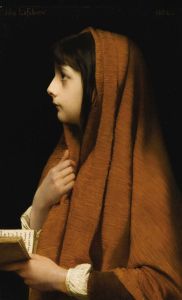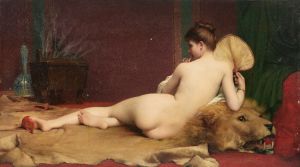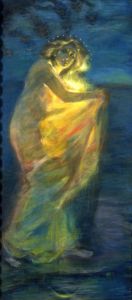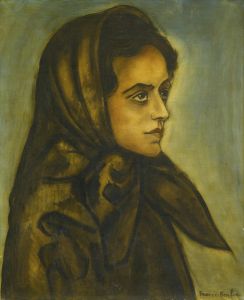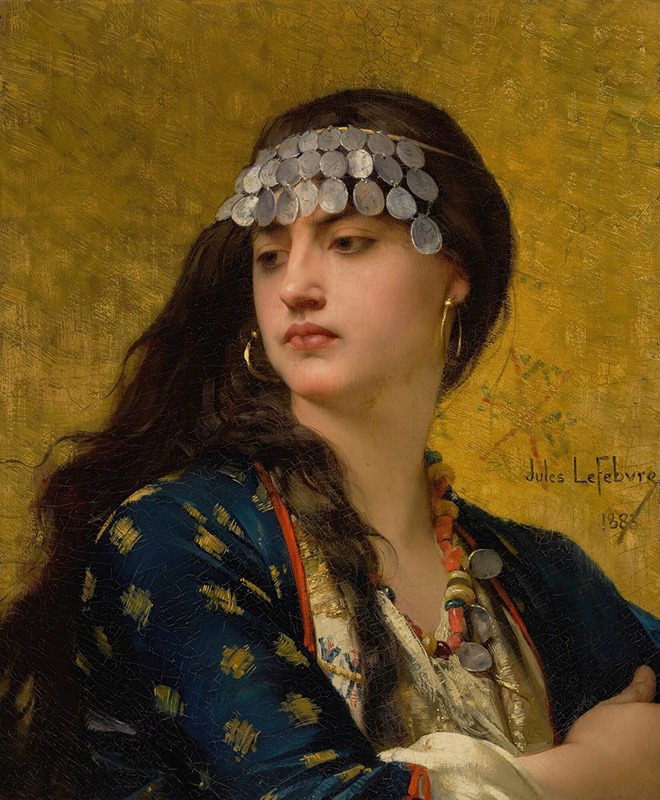
Fatima
A hand-painted replica of Jules Joseph Lefebvre’s masterpiece Fatima, meticulously crafted by professional artists to capture the true essence of the original. Each piece is created with museum-quality canvas and rare mineral pigments, carefully painted by experienced artists with delicate brushstrokes and rich, layered colors to perfectly recreate the texture of the original artwork. Unlike machine-printed reproductions, this hand-painted version brings the painting to life, infused with the artist’s emotions and skill in every stroke. Whether for personal collection or home decoration, it instantly elevates the artistic atmosphere of any space.
Jules Joseph Lefebvre's painting Fatima is a notable work by the French academic painter, who was renowned for his portraits and depictions of the human figure. Lefebvre, born in 1836 and passing in 1911, was a prominent figure in the 19th-century art world, particularly within the academic tradition. He was celebrated for his technical skill and his ability to render the human form with precision and grace.
Fatima is one of Lefebvre's many works that showcase his mastery in portraying the female figure. The painting depicts a young woman, often interpreted as embodying an exotic or Orientalist theme, which was a popular subject in European art during the 19th century. Orientalism in art often involved the depiction of Middle Eastern, North African, and Asian subjects, frequently romanticized or idealized through a Western lens. Lefebvre's Fatima aligns with this trend, presenting a figure that reflects the era's fascination with the "exotic" and the "other."
The painting is characterized by its meticulous attention to detail, particularly in the rendering of textures, fabrics, and the subject's skin tone. Lefebvre's use of light and shadow enhances the three-dimensionality of the figure, a hallmark of his academic training. The composition focuses on the subject, isolating her against a neutral or minimally detailed background, which draws the viewer's attention entirely to her expression, posture, and attire.
Lefebvre was a student at the École des Beaux-Arts in Paris and won the prestigious Prix de Rome in 1861. His works were frequently exhibited at the Paris Salon, where he gained significant recognition. While Fatima is not as widely discussed as some of his other works, such as Chloé or La Vérité, it remains an example of his ability to combine technical skill with the thematic interests of his time.
The exact date of the creation of Fatima is not widely documented, nor is its current location or ownership. However, the painting is often referenced in discussions of Lefebvre's oeuvre and the broader context of Orientalist art in the 19th century. It reflects the cultural and artistic trends of its time, as well as Lefebvre's personal style and expertise.
As with many Orientalist works, modern interpretations of Fatima may involve critical discussions about the portrayal of non-European cultures and the implications of such representations. However, within the context of Lefebvre's career, the painting stands as a testament to his skill and his engagement with the artistic currents of his era.






